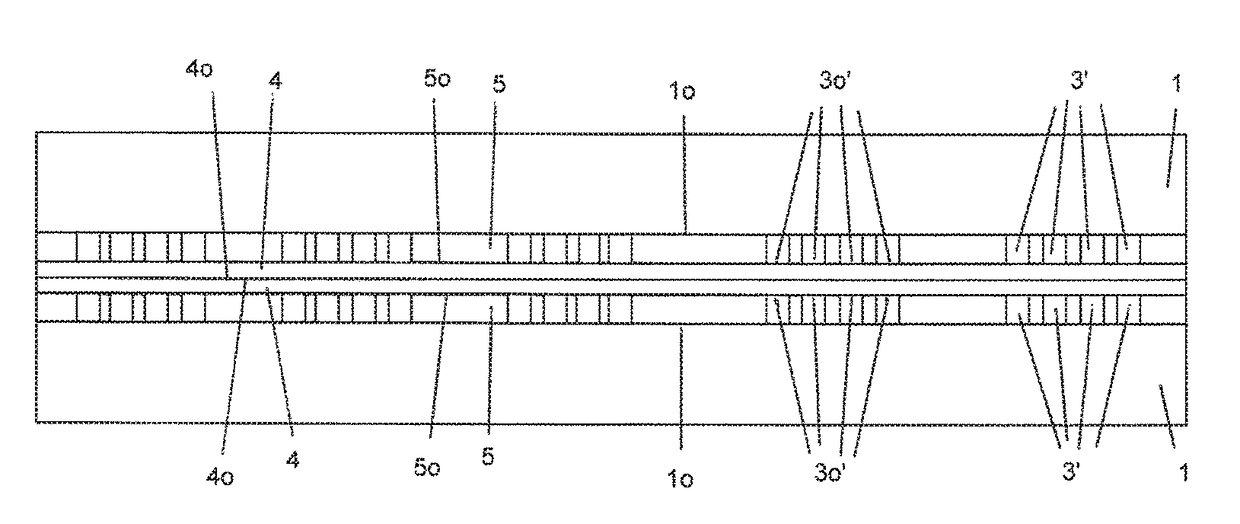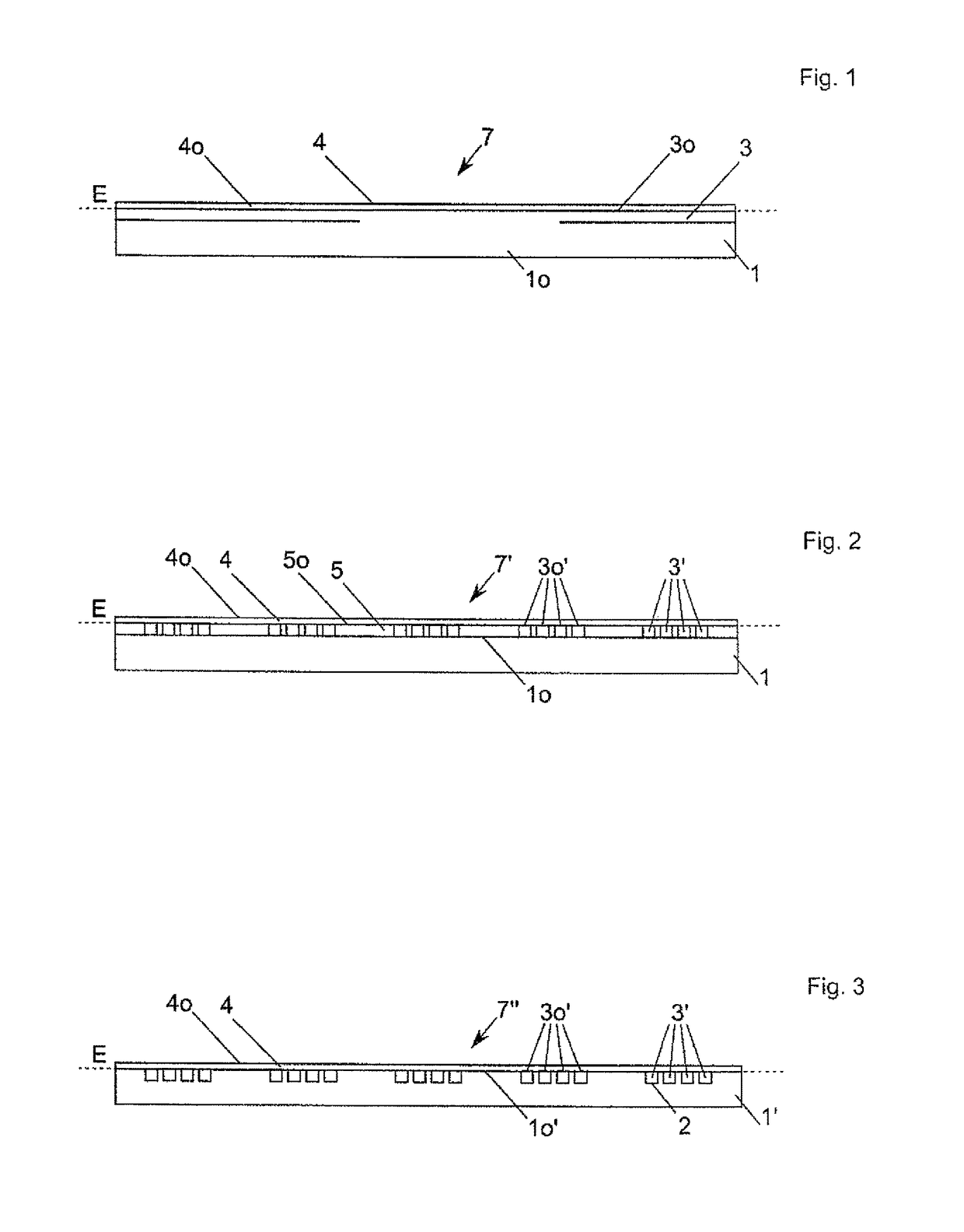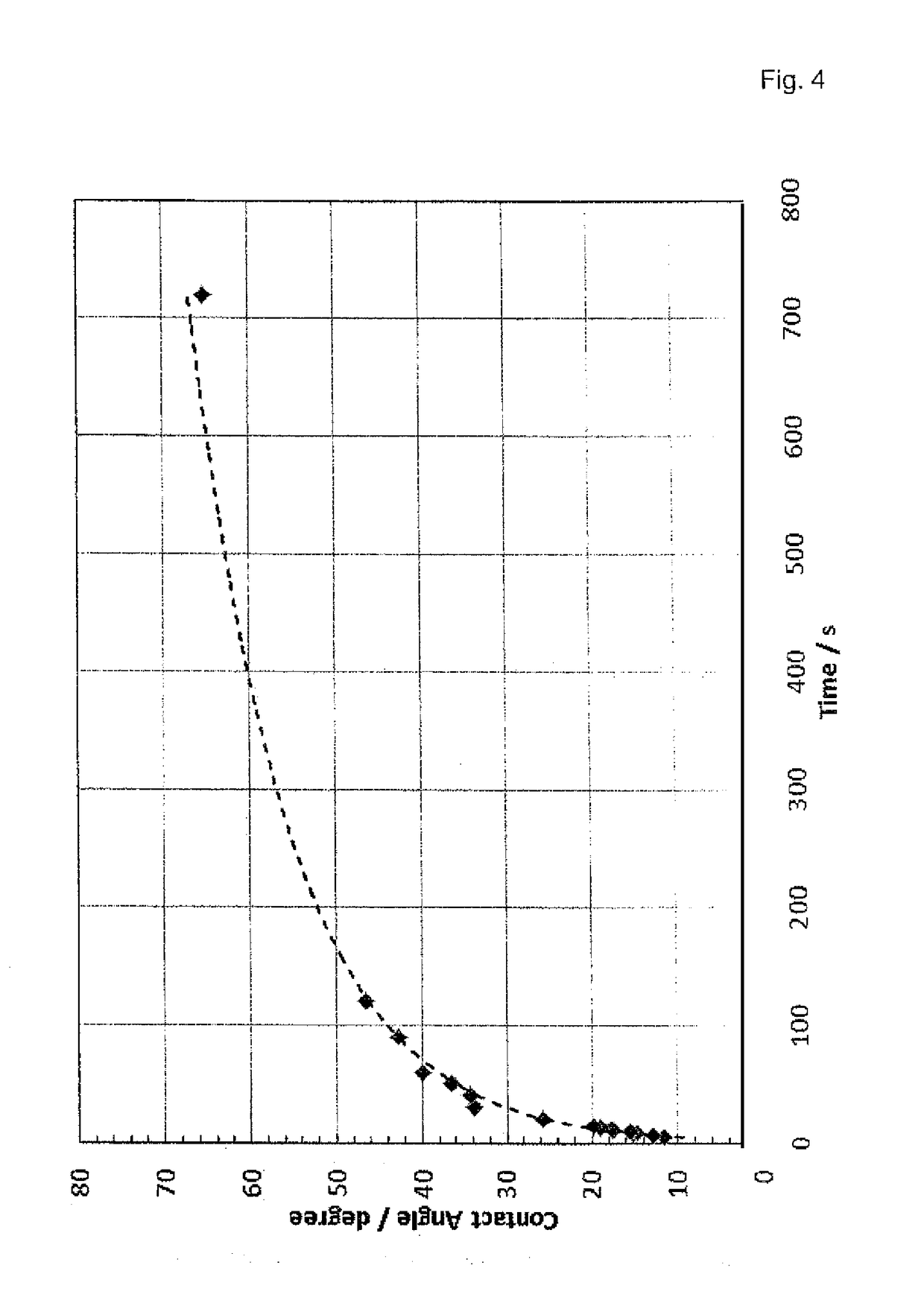Method for bonding metallic contact areas with solution of a sacrificial layer applied on one of the contact areas
a technology of contact area and solution, applied in the direction of semiconductor/solid-state device testing/measurement, semiconductor device details, semiconductor/solid-state device testing/measurement, etc., can solve the problem of not being able to make optimal contact between unpolished solid surfaces and substrates at correspondingly high roughness, and using very high temperatures and pressures
- Summary
- Abstract
- Description
- Claims
- Application Information
AI Technical Summary
Benefits of technology
Problems solved by technology
Method used
Image
Examples
Embodiment Construction
[0087]In the figures, the same components or components with the same effect are identified with the same reference numbers. The drawings show only schematically the embodiments of the invention and are not to scale. Thus mainly the relative thicknesses of the sacrificial layer, the bond regions and the substrates are disproportionate to one another, in exactly the same way as the ratio of the indicated thicknesses to the diameter of the substrates.
[0088]FIG. 1 shows a layer system 7 comprising a first substrate 1 with an interface 1o, a bond region 3 with a bond region surface 3o, and the sacrificial layer 4 with the sacrificial layer surface 4o. The bond region 3 extends in the first embodiment over the entire interface 1o of the substrate 1. The bond region surface 3o in this case forms a first contact surface of the first substrate 1. The bond region 3 can be in particular a material-integral (therefore comprising the same material) and / or monolithic component of the first subst...
PUM
| Property | Measurement | Unit |
|---|---|---|
| thickness | aaaaa | aaaaa |
| thickness | aaaaa | aaaaa |
| thickness | aaaaa | aaaaa |
Abstract
Description
Claims
Application Information
 Login to View More
Login to View More - R&D
- Intellectual Property
- Life Sciences
- Materials
- Tech Scout
- Unparalleled Data Quality
- Higher Quality Content
- 60% Fewer Hallucinations
Browse by: Latest US Patents, China's latest patents, Technical Efficacy Thesaurus, Application Domain, Technology Topic, Popular Technical Reports.
© 2025 PatSnap. All rights reserved.Legal|Privacy policy|Modern Slavery Act Transparency Statement|Sitemap|About US| Contact US: help@patsnap.com



